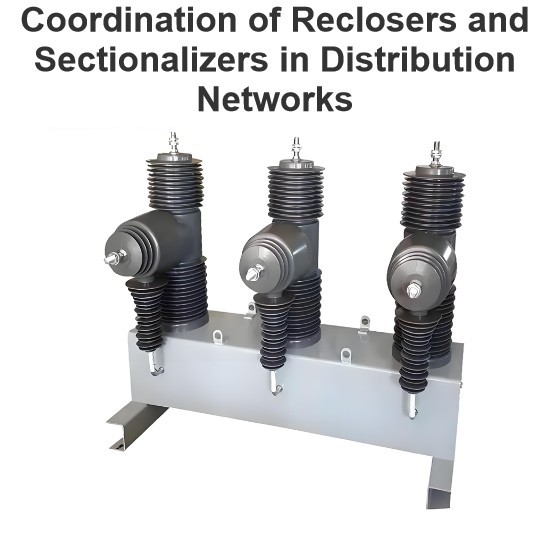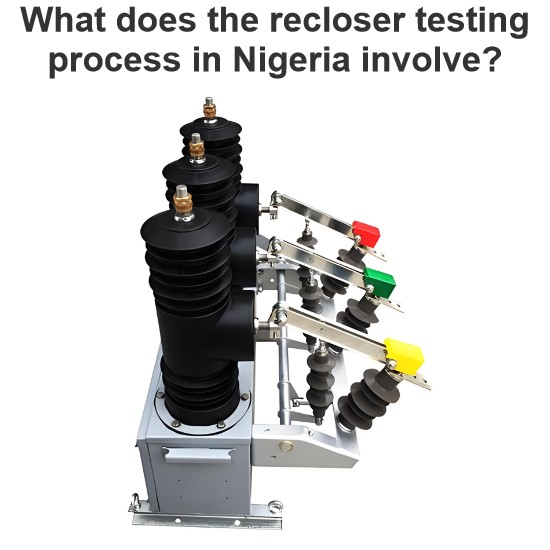1. Introduction to Overhead Lines and Reclosers in Vietnam
Vietnam's power distribution landscape is dominated by overhead lines, especially at the 20kV voltage level, which serves both urban centers and rural regions. As of 2024, approximately 65% of Vietnam's 20kV distribution network relies on overhead infrastructure, making it susceptible to environmental factors like lightning, typhoons, and vegetation interference. In this context, reclosers have emerged as critical components to maintain grid stability. Compliant with standards like IEC 62271-111, these devices are specifically tailored to address the unique challenges of Vietnam's overhead line networks, ensuring minimal downtime and efficient fault management.
2. Fundamental Functions of Reclosers in Overhead Lines
2.1 Transient Fault Management
Overhead lines in Vietnam face frequent transient faults, such as those caused by lightning strikes (accounting for ~30% of all faults in coastal areas) or temporary conductor contacts with trees. Reclosers installed on 20kV overhead lines detect these faults and interrupt current within milliseconds. For example, a recloser in Nha Trang’s 20kV overhead network can clear a lightning-induced fault by tripping and then reclosing after a 1-second delay. If the fault is transient, power is restored immediately; if permanent, the recloser proceeds with its preset reclosing sequence.
2.2 Permanent Fault Isolation
In cases of permanent faults—such as conductor damage from typhoon debris or vehicle collisions—reclosers perform multiple reclosing attempts (typically 3–4 times) before locking out. This mechanism prevents continuous power supply to faulty sections while allowing non-faulty segments to remain energized. In Hanoi’s urban overhead lines, a recloser configured for 3 recloses can isolate a permanent fault on a feeder, ensuring only the affected sub-section is de-energized rather than the entire line.
2.3 Coordination with Distribution Equipment
Reclosers in Vietnam’s 20kV overhead systems coordinate with sectionalizers and fuses to achieve selective protection. For instance, a recloser installed upstream of sectionalizers on an overhead line in Da Nang will trip first during a fault, allowing downstream sectionalizers to record fault currents. If the recloser’s reclosing attempt fails, the sectionalizer nearest the fault will isolate it, minimizing the outage scope.
3. Technical Characteristics of Reclosers for Overhead Lines
3.1 Electrical Design for 20kV Overhead Networks
- Voltage and current ratings: Reclosers in Vietnam’s 20kV overhead lines typically have a rated voltage of 24kV and a continuous current rating of 600–1200A, suitable for load growth in both urban and rural areas.
- Synchronous power coefficient (Psyn): Designed to maintain system stability, these reclosers ensure Psyn values that prevent synchronism loss during fault recovery, even in long overhead lines (e.g., 50 km rural feeders in Nghe An Province).
3.2 Environmental Adaptability with IP67 Rating
Vietnam’s tropical climate—characterized by high humidity (80–95% year-round), heavy rainfall (up to 3,000 mm/year in southern regions), and typhoons—demands robust protection. IP67-rated reclosers:
- Resist dust ingress, critical for rural overhead lines passing through agricultural areas.
- Withstand submersion in 1 meter of water for 30 minutes, essential for overhead line equipment in flood-prone zones like the Mekong Delta.
- Feature corrosion-resistant enclosures (e.g., stainless steel or powder-coated aluminum) to combat salt mist in coastal provinces like Quang Ninh.
3.3 Compliance with IEC 62271-111
Vietnam’s national grid mandates IEC 62271-111 compliance for reclosers in 20kV overhead lines, ensuring:
- Uniform testing for dielectric strength, short-circuit breaking capacity, and mechanical endurance.
- Interoperability between reclosers from different manufacturers, crucial for grid expansion projects in HCMC and Hanoi.
- Standardized fault recording capabilities, enabling grid operators to analyze fault patterns (e.g., seasonal lightning strikes in Central Vietnam).
4. Recloser Types and Their Overhead Line Applications in Vietnam
4.1 Vacuum Reclosers: The Mainstream Choice
- Advantages: Long service life (20–30 years), minimal maintenance, and high arc-quenching efficiency, making them ideal for remote rural overhead lines in provinces like Kon Tum.
- Case study: In Phu Yen Province, vacuum reclosers on 20kV overhead lines have reduced annual maintenance visits by 70% compared to traditional circuit breakers, lowering operational costs for EVN (Vietnam Electricity).
4.2 SF6 Reclosers: Specialized Urban Applications
- Use cases: Compact design suits urban overhead lines with limited right-of-way (e.g., Hanoi’s Old Quarter). SF6 reclosers can be installed on narrow poles without compromising performance.
- Environmental considerations: Though SF6 has high global warming potential, Vietnam’s urban areas prioritize space efficiency, with strict regulations with recloser to minimize emissions during maintenance.
5. Impact on Reliability and Grid Modernization
5.1 Improved SAIDI and SAIFI Indices
Incorporating reclosers in 20kV overhead lines has significantly improved Vietnam’s system reliability:
- SAIDI (System Average Interruption Duration Index): Reduced from 18 hours/year in 2015 to 8.5 hours/year in 2024 for overhead line-fed areas, thanks to reclosers clearing transient faults without manual intervention.
- SAIFI (System Average Interruption Frequency Index): Dropped from 12 interruptions/year to 5.2 interruptions/year in regions like Thanh Hoa, where IP67-rated reclosers on overhead lines mitigate weather-related faults.
5.2 Enabling Smart Grid Initiatives
Modern reclosers in Vietnam’s overhead networks are equipped with:
- Remote communication capabilities: RS485 or LTE modems for SCADA integration, allowing real-time monitoring of 20kV overhead lines in HCMC’s smart grid pilot projects.
- Data logging: Fault current magnitude, duration, and reclosing times, which help EVN optimize protection settings for overhead lines in different climatic zones.

6. Challenges and Future Trends
6.1 Vegetation Management Conflicts
Overhead lines in rural Vietnam often pass through forested areas, where tree growth can cause repeated faults. Reclosers alone cannot resolve root causes, requiring coordinated vegetation management. In 2023, EVN piloted "smart recloser-vegetation monitoring" systems in Lam Dong Province, combining recloser fault data with drone-based tree trimming schedules.
6.2 Climate Change Adaptation
With increasing typhoon intensity, reclosers in coastal overhead lines need enhanced durability. Vietnam is exploring reclosers with higher impact resistance (e.g., IK10-rated enclosures) and redundant power supplies (solar-powered backup) for overhead lines in storm-prone regions like Quang Binh.
6.3 Standardization and Local Production
To reduce import dependency, Vietnam’s Ministry of Industry and Trade is promoting local manufacturing of IEC 62271-111-compliant reclosers. A 2024 joint venture between EVN and a Korean manufacturer aims to produce 10,000 units/year of 20kV reclosers for overhead lines, targeting 60% cost reduction compared to imported models.
7. Conclusion
In Vietnam’s 20kV overhead line networks, reclosers serve as the backbone of reliable power distribution, balancing technical efficiency with environmental resilience. From IP67-rated devices withstanding tropical storms to IEC 62271-111-compliant models enabling grid interoperability, these devices have transformed fault management in overhead systems. As Vietnam progresses toward a smart grid, reclosers will continue to evolve—integrating advanced sensors, AI-based fault prediction, and renewable energy compatibility—to meet the demands of a growing economy and a rapidly urbanizing population. Their role in overhead lines remains indispensable for ensuring that electricity reaches every corner of Vietnam, from the bustling cities to the most remote villages.















